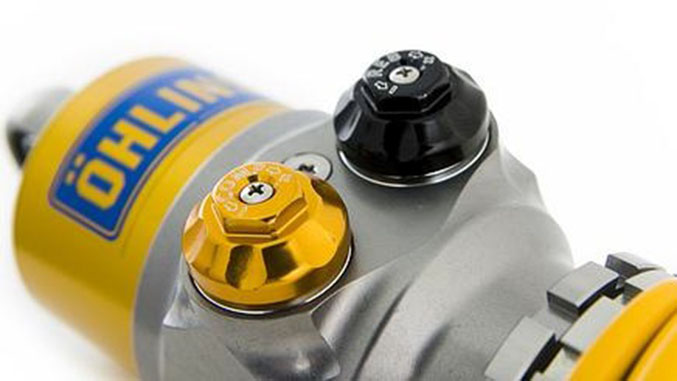Speed Secrets: Shocks – What They Actually Do And How to Adjust Them

How a shock works: A shock provides resistance to compressing and rebounding open. That resistance is also separated into slow- and high-speed shaft movement. Slow-speed is considered up to about two inches per second movement. High-speed is usually two inches per second to about eight inches per second. (Editor’s note: "Slow- and high-speed, as used with shocks, has nothing to do with the speed the car is traveling at. The speed of the shaft moving within the shock is what’s being referred to.)
Shock adjustments: Different shocks have different numbers of adjustors.
- Single has one adjustor that adjusts compression (also known as "bump") and rebound at the same time.
- Double has two adjustors, one for compression and one for rebound.
- Triple has three adjustors, one for slow-speed compression, one for high-speed compression and one for rebound.
- Quadruple has four, one for each slow- and high-speed compression and rebound.
Second, let’s adjust for transitions. We’ve adjusted the shocks for the bumps in the track, now let’s look at the balance. The things that affect the steady state balance of the car are springs, sway bars, ride height, and aerodynamic components. Those things also affect the transitional balance. Shocks only affect the transitional balance, though, not the steady state. Slow-speed compression acts like a spring, but only for an instant. If your car is balanced well in a long turn, but the transition to entering that turn or if it oversteers in a quick turn from one direction to another, you would increase the slow-speed compression in the front. This transfers force to the front tires to give more grip to the rear. You can also add rebound to the rear to help hold the weight on the rear tires, giving grip there. All this is temporary, as the shocks bleed down and the car then rests on the springs/bars, etc. And all these adjustments are with the slow-speed adjustors.
Keep in mind that slow-speed adjustors affect high-speed some, as well, and vice versa. The adjustors can’t be completely separated, by design.
A general way to adjust shocks is to start soft with all settings, so the car is compliant with the road surface. It will roll around and feel too soft. Slowly begin to increase the compression until the car does something you don’t like (becoming harsh and losing grip over bumps, inability to turn, inability to put the power down). Then, soften a click or two. Then, do the same for rebound. Once there, evaluate the balance of the car and separate into steady state and transitional. Adjust the bars and rake for steady state; adjust the shocks (slow-speed) for transitional balance.
It can get a bit complex, sometimes! Just remember where your settings are, and try some things. But to begin, start soft and increase from there.


















